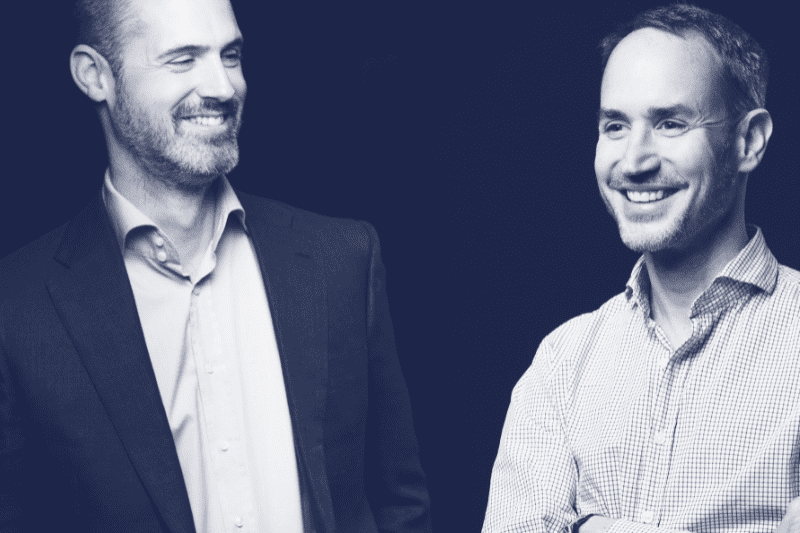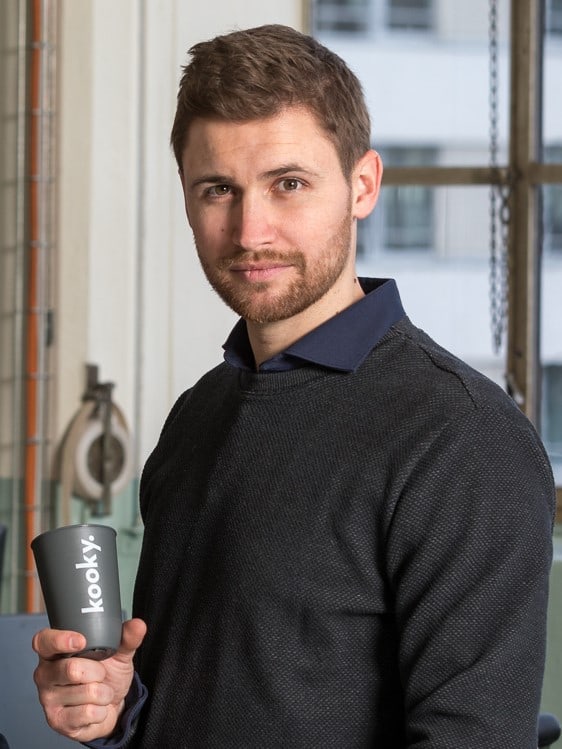After over a decade in academic research, academia always felt like home for Dr Ying Lia Li (known by Lia), but today she is flourishing as the leader of the UK’s newest photonics start-up Zero Point Motion. With expertise ranging from micro-electro-mechanical systems (MEMS), photonic integrated circuits (PICs), IC and cellular chip development and even quantum sensing, the team behind Zero Point Motion is developing exceptionally high-performance inertial sensors that will bring positioning and navigation to a new level.

Founder and CEO, Zero Point Motion
Lia founded Zero Point Motion in 2020. She has nearly 15 years of experience in fiber optics, optomechanical sensing, and chip design. Trained as a physicist at Imperial College before working at the Advanced Technology Center at BAE Systems, Lia then completed a Ph.D. at University College London where she created experiments probing the quantum and sensing properties of microresonators. She was awarded three fellowships to continue her research in optomechanical sensors, and successfully deployed a silica fiber based accelerometer for Dstl in 2018. In 2020 she combined her optomechanics research with her previous experience working on chipscale devices in BAE Systems to invent a new form of MEMS inertial sensor. In 2021 she was awarded the prestigious Institute of Physics Clifford Paterson Medal and Prize for her commercialization of fundamental physics.
What led you to study Physics?
My parents are both mechanical engineers who moved from China to the UK to do their Ph.Ds and provide me with opportunities they could only dream about. I more or less grew up on the campus of Bristol University until I was 8, living on campus with the other students and postdocs, and spent a lot of time in the lab with my parents because they couldn’t afford babysitters. This exposure to the academic environment was important for me, and allowed me to develop a keen interest in science and especially physics. There aren’t many teenagers who ask their parents to take them to a particle accelerator for perhaps the nerdiest summer holiday ever – CERN in Geneva! I loved reading about the LHC – this was before the LHC was completed and switched on – so there was huge anticipation about how it might and subsequently did change our understanding of particle physics. When I started my undergraduate degree, I was able to better understand ‘how the sausage is made’ and realized that particle physics was less about doing daily experimentation and more about data analysis than I expected. That’s why I decided to go into laser physics and had the opportunity to work with Prof Mike Damzen at Imperial College, building lasers from scratch and discovering how much I love small tabletop experiments. Building a laser from nothing felt like a superpower. This is how I got hooked on optics and photonics, and I’ve continued to work with lasers throughout the rest of my career.
“Building a laser from nothing felt like a superpower. This is how I got hooked on optics and photonics.”
Recently you were awarded the Clifford Paterson Medal and Price for your drive to commercialize your quantum sensing research through Zero Point Motion and your effort to make science more inclusive. What does that award mean to you?
I’m honored that my colleagues nominated me and I’m proud that the award recognizes not only my academic work but also mentions Zero Point Motion and equity in science. These three topics are very dear to me, and I attribute my growth as a human and as a scientist from what I’ve learnt being involved in equality, diversity and inclusion groups. The award also marks the point in my life where I transition from researcher to entrepreneur and stepping off the academic ladder. As cliché as it sounds, leading Zero Point Motion is the culmination of my entire life’s work, and as one of few women of color, I have this unique opportunity to show others that this is a path they can also follow.
What can be done to motivate more young women to study science?
The major issue is that there is a lack of researchers that young women can relate to, which isn’t surprising because there are still gender biases in society; in the UK, over 40% of the academic science workforce are women but this falls to less than 20% who have professorship. It’s not a question about if women like doing science, but what we’re doing to counteract the hostile environment they then enter into. Encouraging young girls into science doesn’t help because they’ll face the same barriers that prevented their predecessors from obtaining equity. And I’m talking about things that range from being mistaken for the secretary, obtaining equal pay, all the way to sexual harassment. The path into science should be demystified and presented to our younger generations by both teachers and parents. I encourage young women to talk to people in academia, people who might have tips and tricks on how to make a mark and be taken seriously. Consult university websites, attend outreach initiatives, look for activist groups like women in science groups, and there’s people like me who are often more than willing to take half an hour and share our experiences. But also practice patience; the burden of doing this type of equality, diversity and inclusion work is often left to the most minoritized communities.
Before founding Zero Point Motion, you joined the University of Bristol Quantum Technology Enterprise Center incubator program. How important was that for you?
I think incubation or accelerator programs that bridge the transition from academia to entrepreneurship are very important. No one ever achieves anything in their own bubble, so it helps to be amongst other budding entrepreneurs and founders. Building up your commercial and leadership skills, talking to lawyers and investors, understanding the mentality of VC funding – such things are alien to researchers at first, and it is good to normalize these experiences with others that are on the same journey. Furthermore, it helps to keep the momentum going, because there will be times where you hesitate and might struggle to continue. It’s important to keep going in an environment that isn’t trying to claim any stake or control in your startup – QTEC was unique in that respect, and now other universities are taking similar approaches such as UCL InQuBate, which has also supported my path.
What is at the heart of Zero Point Motion?
We take fundamental research in cavity optomechanics that has been shown to detect displacements at world record precision – The Laser Interferometer Gravitational Wave Observatory currently holds the record, sensing motion 10,000 smaller than the size of an electron – to build chips that measure motion very precisely without the noise associated with electromechanical measurements. Take your smartphone, for example. It has motion sensors to detect when you pick it up. But for navigation, the noise level in the measurement is so high that substantial errors accumulate over a matter of seconds. This is why the position needs to be frequently reset with GPS – but GPS isn’t a guaranteed signal – it’s unavailable indoors and is easily jammed, spoofed or denied. There are inertial sensors that are used in the defense industry that can keep position without GPS for hours or even days, but they are the size of a laptop or even bigger and can cost hundreds of thousands. So, the market for inertial sensors is split into high-performance but expensive bulky gear and low-cost but imprecise sensors. What Zero Point Motion is doing, is building inertial sensors that are precise, chipscale and affordable. We’re targeting 100x improved precision which crudely translates into sub-millimeter precision for short term positioning and navigation errors of less than 0.5% final distance error over distance travelled – these errors will be motion trajectory dependent.
What are industries that could make use of such a sensor?
Drones are an obvious application They are fast, can do complex rotations and move vertically as well; these are all dynamic movements that cannot be faithfully tracked with current GPS. Tracking such short-term dynamics and assuring drone safety indoors and outdoors, even for swarms of drones, would greatly benefit from high-performance but small inertial sensors. The Mars Ingenuity copter is a great example; it experienced a very glitchy landing when its camera skipped a frame rate, sending the copter into a spiral. By turning all navigation tools off except the inertial measurement unit, it was able to land safely. You simply can’t rely on external signals like GPS or LIDAR or cameras for certain dynamics, especially high velocity platforms where these external signals have too slow an update rate.
There are also less obvious but equally exciting applications, for example, in image system stabilization. Vision and motion are starting to come together, but new approaches are needed that can automatically stabilize image frames by tracking the vibration of a camera module as it is held by your hand, your head or on a drone. As you can imagine, these are very large markets that include smartphones which already carry chip-scale time of flight and simple LIDAR type optical chips. What’s fascinating is that without monitoring the motion vector of the smartphone, your photos will suffer from shake and shift errors – essentially a blurring of the image that can be up to 100’s of pixels in size in low light conditions. Using our inertial sensors could reduce these effects down to the sub-pixel through computationally stabilizing the image.
You have managed to attract semiconductor industry veterans such as Gordon Aspin and Pascal Herczog to your young startup. How did you do that?
I’m a people person and I try to maintain relationships with as many people as I can! My commercialization journey started when I was selected for the Nature/Entrepreneur First Innovation Forum in 2016, here Nature found me technical mentors and Entrepreneur First helped me meet some entrepreneurs. The forum lead to a pitch in front of a distinguished panel at Nature that included Prof Khaled Karrai of Attocube, who has since been supportive for me as his research background is also optomechanics. I was then invited to publish an article about entrepreneurship in Nature Nanotechnology, which grew my network even more. Somehow, amongst all these people, I met Dr Tony Milbourn from the investment committee of u-blox and he took a shine to the technology. It wasn’t until 2020 after I’d incorporated Zero Point Motion by myself that Tony introduced me to Gordon and then Gordon introduced me to Pascal; both had worked with Tony in previous start-ups as well as for u-blox. I think it’s very important to surround yourself with the right people from the start and I took my time to find those people. I wanted to find people with longevity in the chip business who understand the startup journey and wanted to go on this wild ride with me. As a first-time founder, I need to rely and on and trust my founding team and also ensure I’m setting up the best leadership structure for new employees.
“Building a streamlined supply chain will be crucial, and we’re in the midst of a huge shake up in the foundry business model.”
What are you working on with Zero Point Motion now and what are the challenges you face?
Zero Point Motion is a fabless chip company, which means that we will rely on third parties to manufacture the sensors. Building a streamlined supply chain will be crucial, and we’re in the midst of a huge shake up in the foundry business model so the timing is perfect for a new MEMS/PIC company like ours. The good thing is that even though we combine all three uses of silicon; MEMS, PICs and Integrated Circuits, we can rely on the same tools, materials and processes that are firmly established in the industry. I could already predict from my very first tests with an optical fiber-based sensor prototype what we would need to achieve in terms of physical and software architecture. So, in a way, I’ve already proved the fundamental optomechanical sensing mechanism works in the field but miniaturizing to a fully integrated chip-scale package is no small feat. Finding talent with chip design experience isn’t easy, but remote working will improve our ability to hire candidates internationally; Zero Point Motion was started just before the first UK lockdown, and we have thrived working remotely. Of course, as we scale our headcount, we’ll need to continue adapting our working model and how we support new employees.
What do you expect to achieve in 2022?
This year we plan to receive the first chip devices where we can assess our mechanical and photonics designs and our integration process. Then, through design iterations and thorough testing and verification, we’ll pull together the chip including the system architecture so that users can test our prototypes by the end of the year. Getting early traction with customers, receiving their feedback, and delivering demonstrations will put us in a great position to raise a Series A that will help us scale up the company towards production.
Written by
WITH US, YOU CANCO-INVEST IN DEEP TECH STARTUPS

Verve's investor network
With annual investments of EUR 60-70 mio, we belong to the top 10% most active startup investors in Europe. We therefore get you into competitive financing rounds alongside other world-class venture capital funds.
We empower you to build your individual portfolio.
More News
08.04.2025
“ANYbotics has 400 employees, and 200 of them are human.”
ANYbotics, the Swiss robotics powerhouse, is ready to scale globally and create a workforce of autonomous robots for industrial inspection. In our interview, founder Péter Fankhauser emphasizes that its versatile four-legged robots solve a critical data problem for large industrial clients. He also offers a glimpse of the future of physical AI.
01.04.2025
“CO2 is the new gold”
Startup Phlair develops a new, cost-effective technology to capture CO2 from ambient air. In our interview, co-founder and CEO Malte Feucht explains why companies such as Google, McKinsey, Salesforce, Stripe and Shopify back the technology .
28.02.2025
“We have done these things before”
Metafuels develops new technology to produce a synthetic jet fuel that paves the way for climate-neutral aviation. In our interview, CEO Saurabh Kapoor discusses the plans to scale up capacity from litres to hundreds of tonnes per day.
Startups,Innovation andVenture Capital
Sign up to receive our weekly newsletter and learn about investing in technologies that are changing the world.




